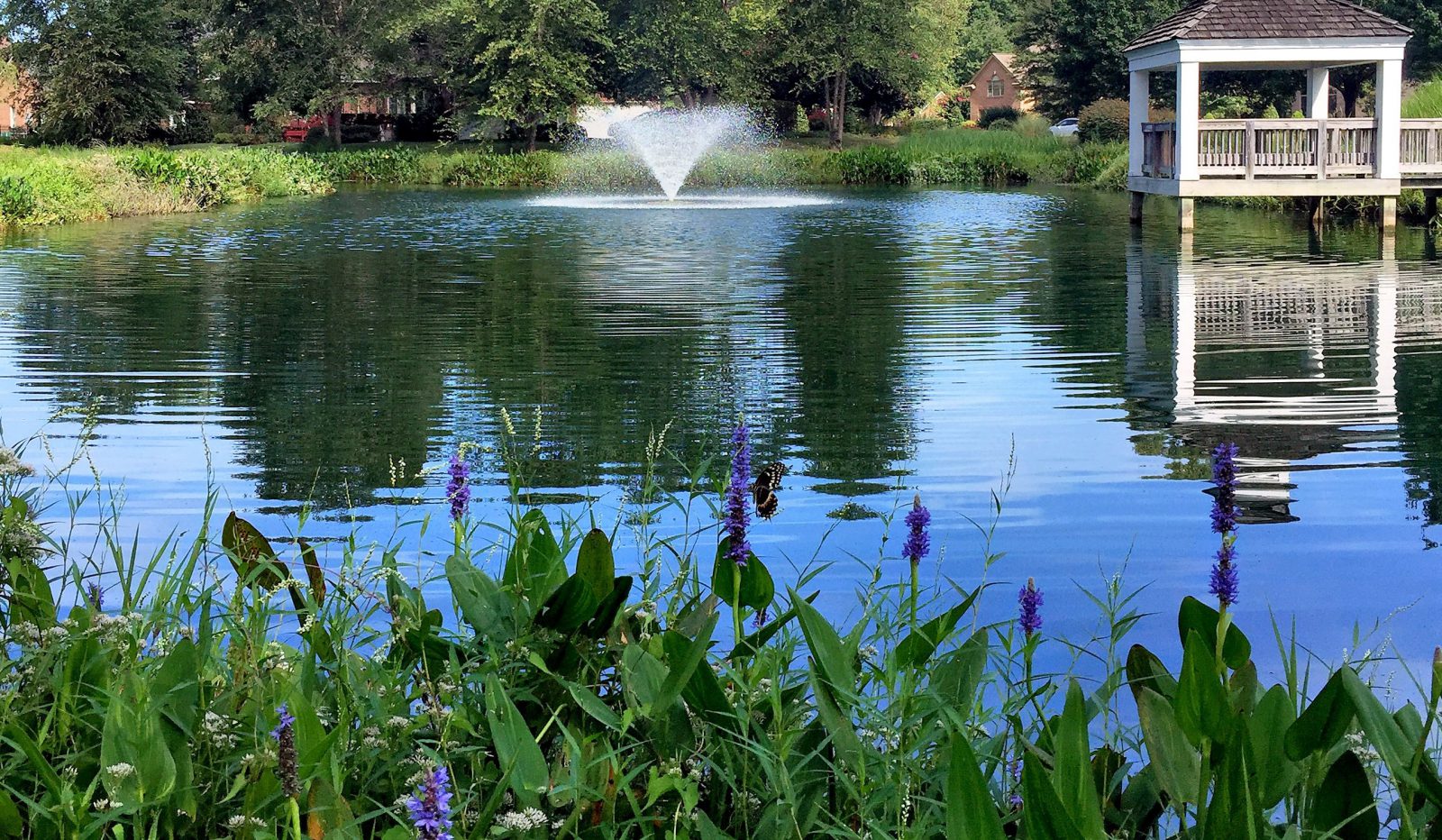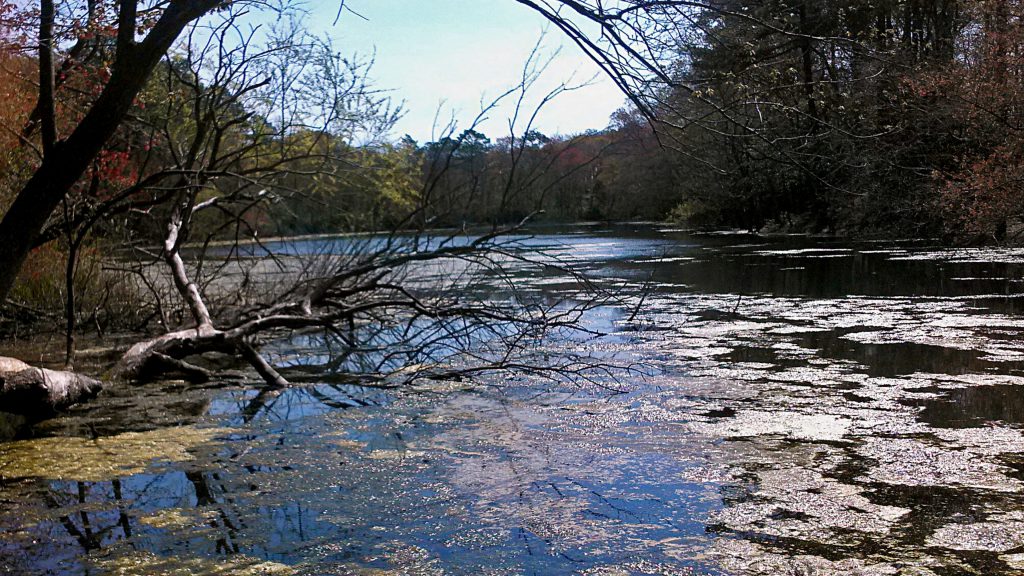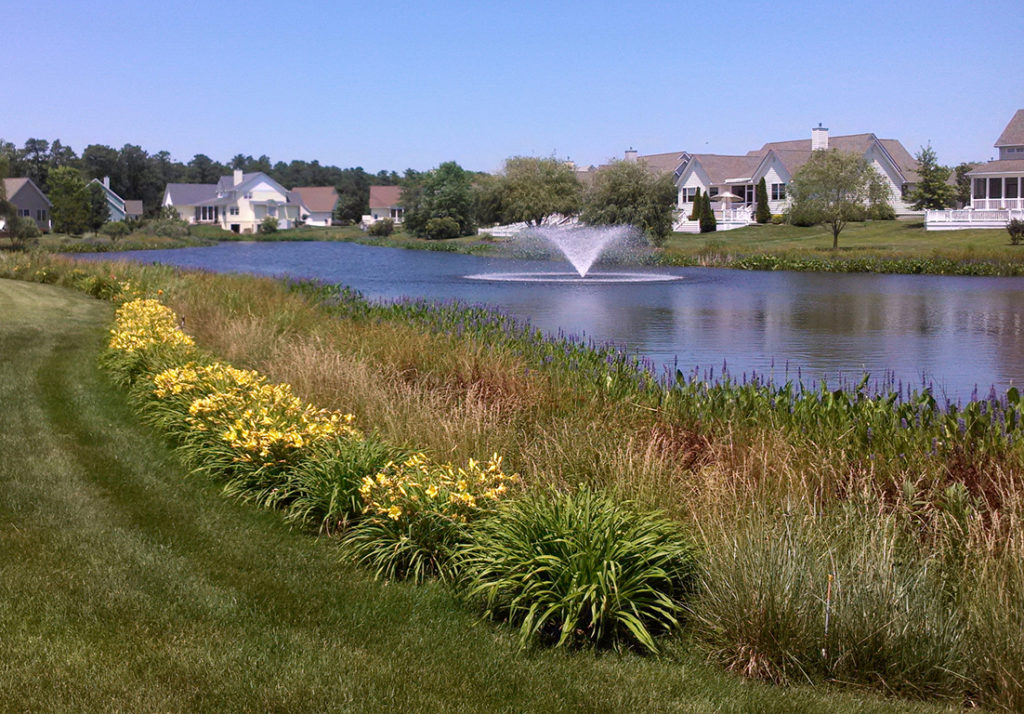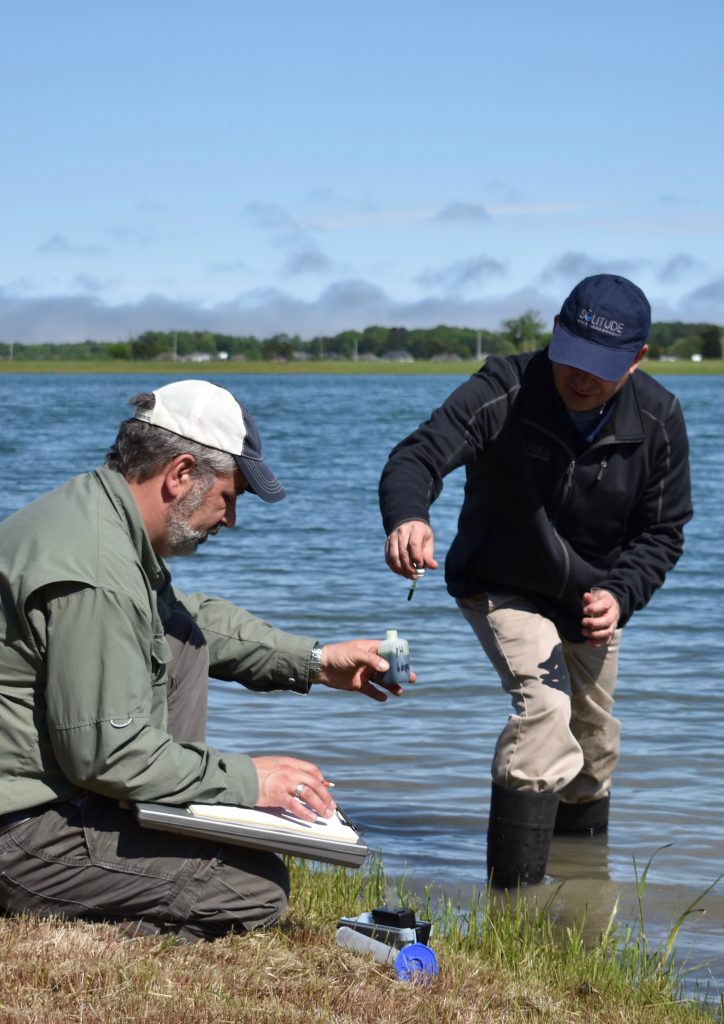
Fertilizer in Your Pond: Managing Nutrients to Change the Game
If you own or manage a body of water long enough, you will experience invasive vegetation and algae growth. This growth can be associated with bad smells and dead fish, converting an otherwise pristine waterbody into an ugly mess. Often, a manager’s first reaction is to identify the intruder, apply a fast-acting herbicide/algaecide and wash their hands of the matter. This strategy may work for a while, but unfortunately, growth returns time after time. Managers can eventually enter a cycle where the frequency and severity of invasive growth begins to climb out of control along with expenses. Enter Integrated Pest Management (IPM). IPM considers biological, mechanical and chemical controls alongside adjustments in cultural practices, enabling us to treat the problem, not just the symptoms.
Each aspect of IPM is worthy of consideration, but one of the key factors in preventing noxious weed and algae growth is nutrient management. Nutrients come from both natural and synthetic sources. It’s important to remember that the nutrients that enter our ponds come in two forms: organic and inorganic. Organic nutrients consist of any matter of plant or animal origin, such as grass clippings, commercially-produced organic fertilizers, manure, composts and mulches. Inorganic nutrients, on the other hand, are typically salts that are produced commercially for the enhancement of turf, landscapes and other forms of agriculture.

Ultimately, these nutrients promote active growth in our landscapes and then are dissolved into surface runoff, making their way straight to our ponds and lakes, where they can fuel nuisance aquatic weed and algae growth when levels are excessive. To prevent this, multiple strategies should be employed to minimize the impact of these nutrients on any waterbody, starting with a reduction in synthetic fertilizer and organic nutrient applications near lakes and ponds. Fallen leaves and grass clippings are also common sources of excess nutrients, and these materials should be kept out of our waterbodies. Additionally, if your lake is in close proximity to domestic animals or livestock, remember to limit their access to the pond. In addition to trampling down your shorelines, animals deposit excess nutrients in surface water. Some of the worst water quality we ever see is closely related to livestock farming practices.
Once nutrient runoff has been limited, steps must be taken to reduce the impact of nutrients that have already made their way towards your lake or pond.

First, we should establish and maintain as much of a vegetative buffer as possible. Buffers are dense bands of native vegetation growth that we establish along the edges of our water (usually measuring 3-5 ft across) and whose growth serves to limit erosion, soak up nutrients, and filter decomposing plant matter that is carried by run-off. A professional lake manager can help you maintain your buffer and recommend beneficial species that are native to your particular region.
Second, beneficial bacteria can be applied or promoted in a given waterbody. These microscopic helpers process nutrients in our waters that would otherwise fuel undesirable vegetation and algae growth. Some forms of beneficial microbes live in the water column, but most live in biofilms and in benthic sediments. Commercial products exist to boost this microbial activity and best target the aforementioned interfaces with living organisms and nutritional supplements.

Finally, when known nutrients are introduced to a waterbody in excessive levels, we have a variety of inorganic solutions for nutrient remediation. These products use a tight bond between a metallic ion and negatively-charged nutrient particle to create a strong connection that is intended to permanently bind excess nutrients, removing them from the pond’s food web. Some products are more effective than others in particular situations, so you should visit with your lake professional in order to select the material best suited to your waterbody.
In short, effective algae and vegetation control must involve an integrated approach targeted at the entire ecosystem. This approach must consider nutrient inputs in order to avoid ever-increasing invasive growth. Manage nutrients properly, and you can ensure that your landscape and turfs remain healthy and your ponds manageable.
Who We Are
SOLitude Lake Management is a nationwide environmental firm committed to providing sustainable solutions that improve water quality, enhance beauty, preserve natural resources and reduce our environmental footprint. SOLitude’s team of aquatic resource management professionals specializes in the development and execution of customized lake, pond, wetland and fisheries management programs that include water quality testing and restoration, nutrient remediation, algae and aquatic weed control, installation and maintenance of fountains and aeration systems, bathymetry, mechanical harvesting and hydro-raking, lake vegetation studies, biological assessments, habitat evaluations, and invasive species management. Services and educational resources are available to clients nationwide, including homeowners associations, multi-family and apartment communities, golf courses, commercial developments, ranches, private landowners, reservoirs, recreational and public lakes, municipalities, drinking water authorities, parks, and state and federal agencies. SOLitude Lake Management is a proud member of the Rentokil Steritech family of companies in North America.









